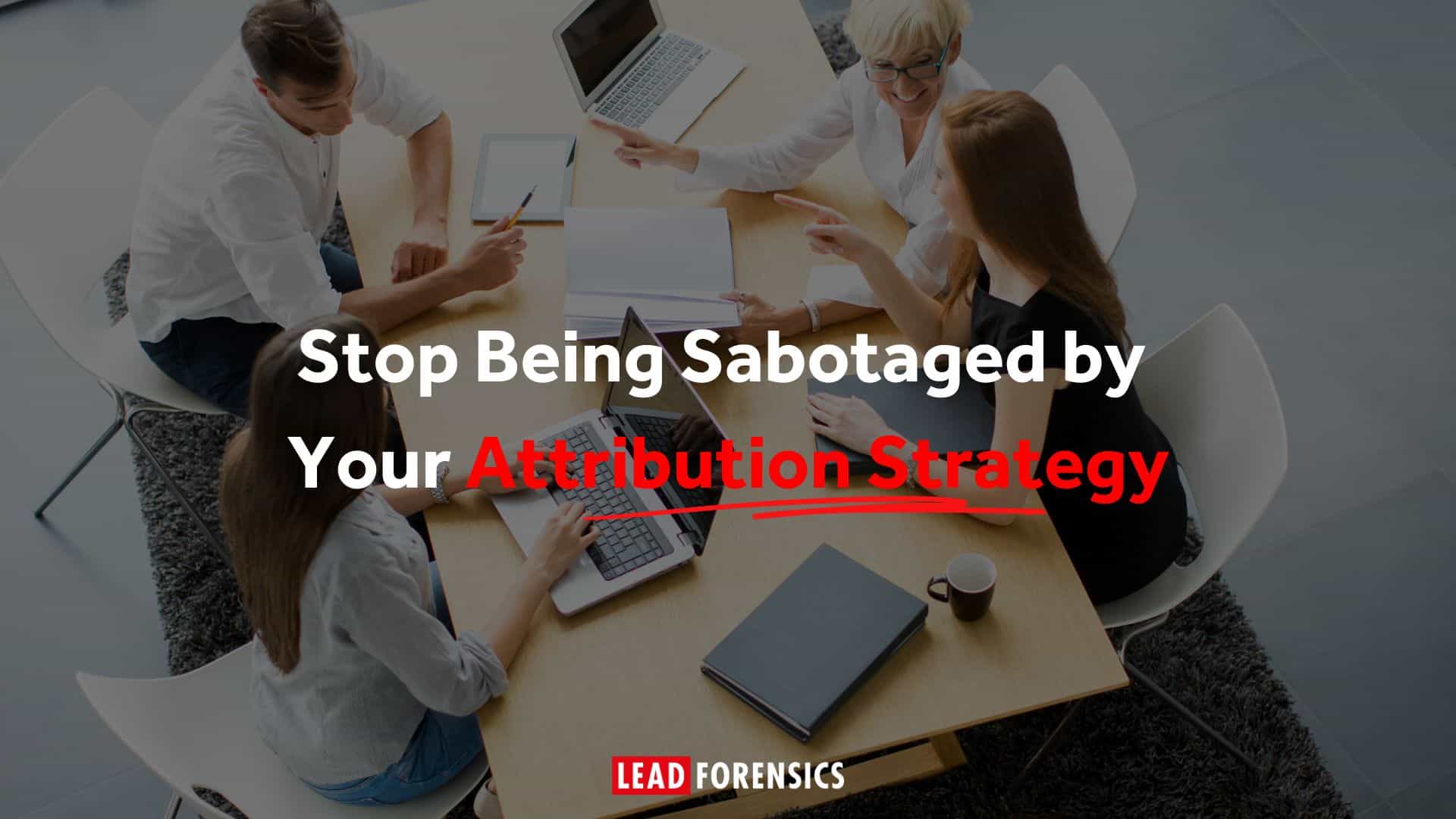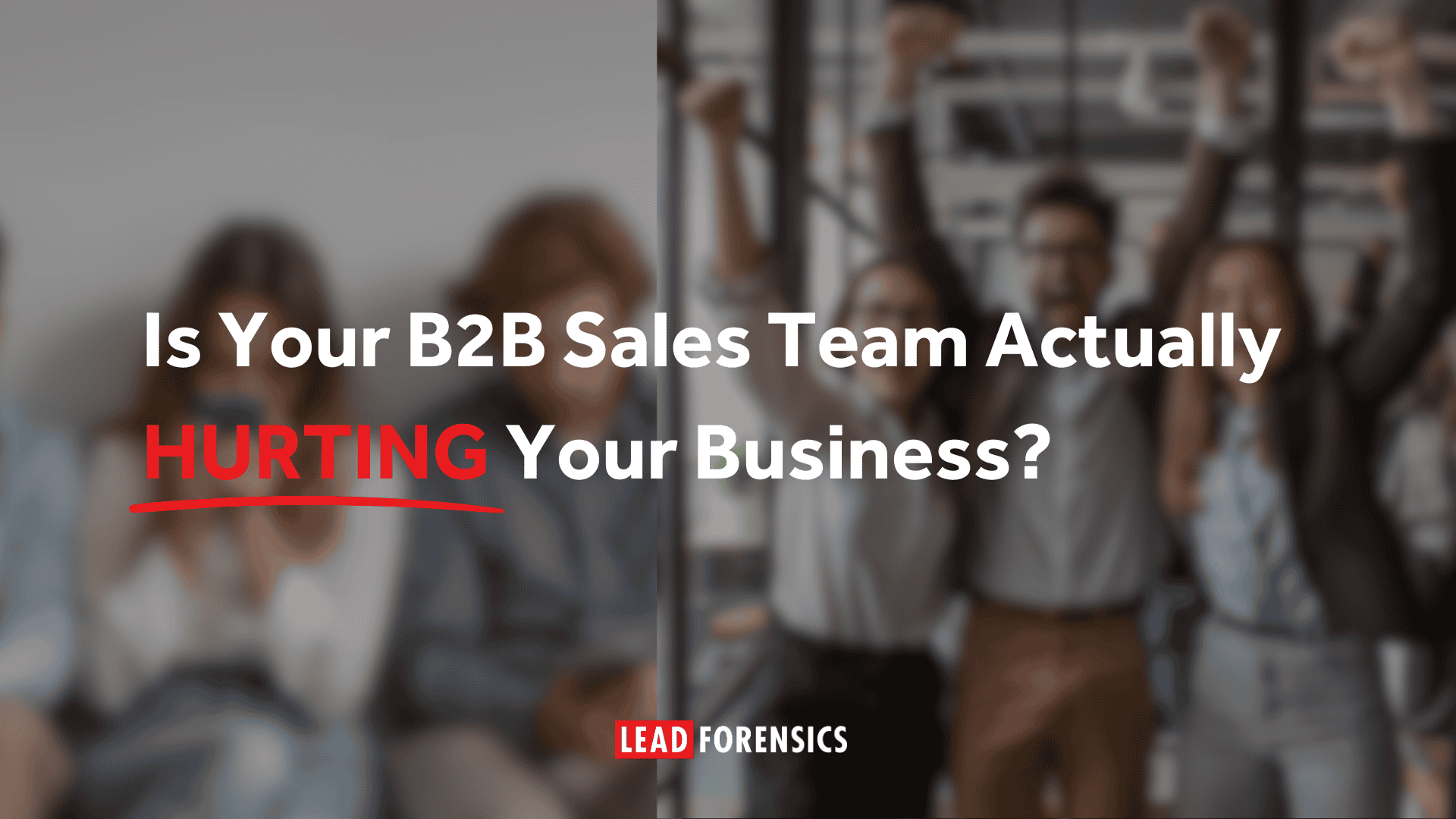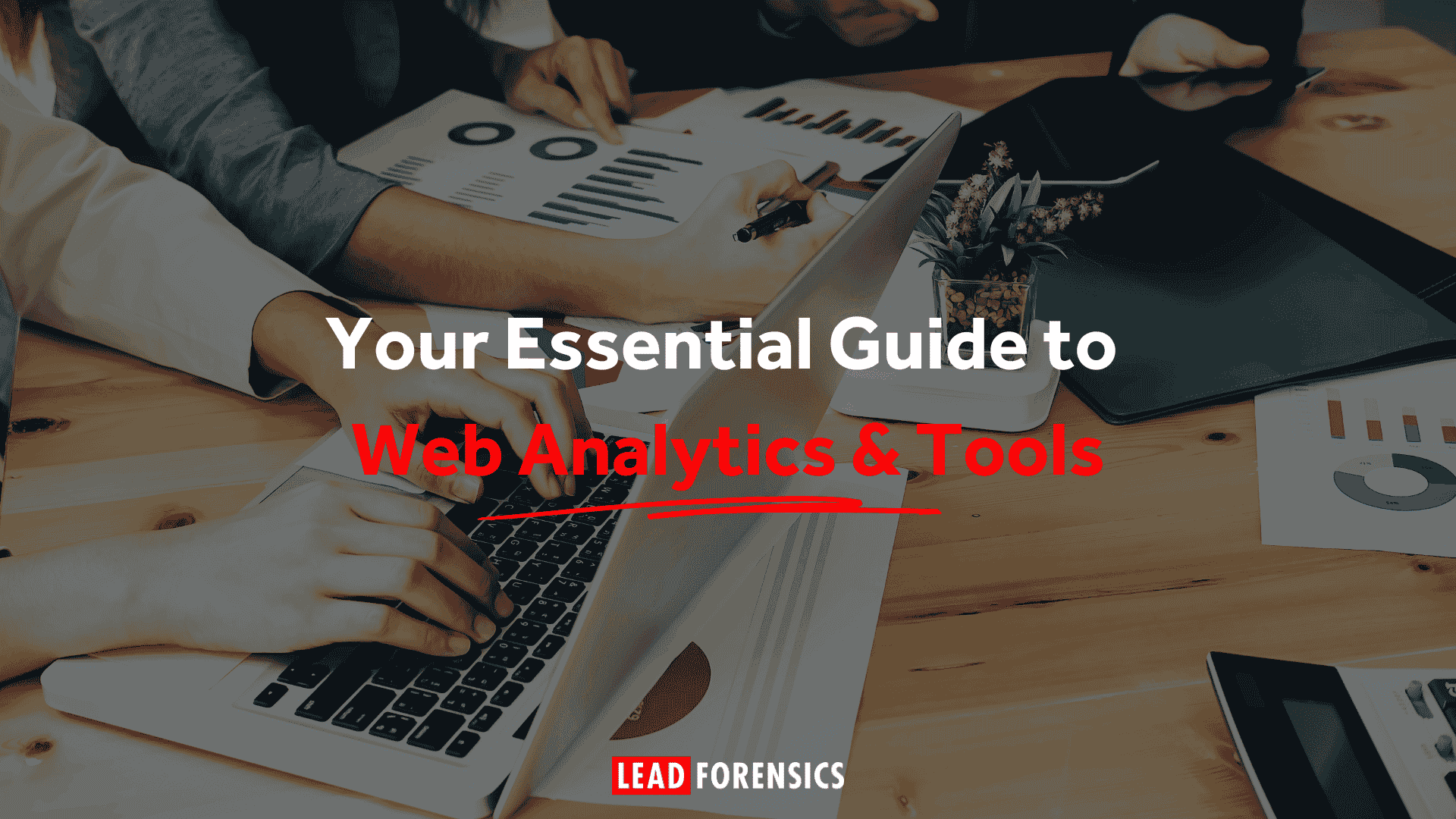“You have to be able to give them something that doesn’t look like anyone else’s content. You have to resonate with them on a level that immediately catches their attention.”
– Christina Garnett, Principal Marketing Manager at HubSpot in our webinar The Power of Emotion: Creating Content that Converts
How does emotion work in B2B marketing?
Emotion is a powerful force that can drive behavior and influence decision-making. As human beings, we are wired to respond to emotional stimuli, and this is especially true when it comes to marketing. Whether it’s the thrill of a sale or the pain of a missed opportunity, emotions play a crucial role in how we engage with brands and make purchasing decisions.
That’s why, in this blog post, we’re going to explore the importance of emotion in marketing and how it can be harnessed to create content that truly converts. From understanding the psychology of emotion to crafting compelling narratives that connect with your audience, we’ll dive deep into the strategies and techniques that will help you create content that resonates with your audience and drives results.
Want to learn more on this topic? Watch our webinar with Christina Garnett, Principal Marketing Manager at HubSpot.
Understanding the Psychology of Emotion and Conversion
In B2B marketing, understanding the psychology of emotion and its impact on conversions is crucial. B2B purchases are often made by teams of decision-makers, and emotions play a significant role in how they evaluate and choose products or services.
“Remember that the work you’re doing is human. What you’re trying to create in people is human. So there’s a lot of conversations about AI. There’s a lot of conversations about automation, but the core of what you’re doing is human behavior and human psychology, no matter what tools and tips and tricks you’re using.”
– Christina Garnett, Principal Marketing Manager at HubSpot in our webinar The Power of Emotion: Creating Content that Converts
Emotions like trust, reliability, and security can be especially important in B2B marketing, as these products and services often have a direct impact on the success and growth of a business. By evoking these emotions in your marketing content, you can increase the chances of conversion by building trust and credibility with your target audience.
Another important aspect of B2B marketing is creating a sense of belonging and community among your target audience. By creating a sense of belonging and community among your target audience, you can increase their emotional investment in your brand, and build loyalty and advocacy.
In this section, we will explore the specific psychological principles that drive emotions and conversion in B2B marketing. We’ll also look at how different emotions can be used to influence different stages of the buying journey, such as building trust and credibility during the awareness stage, and evoking a sense of belonging and community during the consideration and conversion stages.
Understand your Audience Through Social Listening
Social listening is an essential aspect of understanding your audience and staying up-to-date on what they are talking about and what their needs and interests are. It refers to the process of monitoring social media and online platforms for mentions of a brand, product, industry, or any specific keyword or hashtag. Social listening allows companies to gather data and insights into what is being said about their brand, both positive and negative, and to identify any trends or patterns in consumer behavior and sentiment.
“If you don’t have a social listening platform or program for your brand, and you are not taking the time to understand how your consumers, how your customers and prospective customers are talking about you and your specific vertical, how are you really able to provide them with something that is striking and resonates? You’re not.”
– Christina Garnett, Principal Marketing Manager at HubSpot in our webinar The Power of Emotion: Creating Content that Converts
Without a social listening program, brands will miss out on valuable insights into what their audience is saying and thinking, which can result in missed opportunities to connect with them and meet their needs.
Social listening allows brands to tailor their messaging, product offerings, and overall strategy to align with their audience’s preferences and behaviors. It provides a window into the conversation and helps companies better understand what their audience wants, what they like and dislike, and what they are talking about. By incorporating this information into their marketing strategy, brands can ensure that their content and messages are resonating with their audience and making a positive impact.
Social listening is an essential tool for brands that want to understand their audience and provide them with meaningful and relevant experiences. By taking the time to listen to what their audience is saying and incorporate these insights into their strategy, brands can build stronger relationships with their customers, increase engagement, and drive business growth.
Crafting Compelling Narratives That Connect with Your Audience
When it comes to crafting compelling narratives for a B2B audience, it’s essential to understand that you’re not just selling a product or service, you’re selling a solution to a problem. And the key to connecting with your audience is to understand their problem and speak to it in a way that resonates with them.
“I really like the Pixar story spine. I think it’s a really great foundation if you’re thinking about how you wanna do stories, because Pixar is the master of being able to make you cry in a children’s movie.
– Christina Garnett, Principal Marketing Manager at HubSpot in our webinar The Power of Emotion: Creating Content that Converts
“It’s a sequence of like, and then this happened, and then this happened, and it walks you through essentially the hero’s journey. This person is here, this is who they are. There’s a challenge because of this. The great storytelling that we see across content and in literature has been around forever. The hero’s journey is well established.”
Another way to do this is to take a page out of Seth Godin‘s book and focus on creating a story that is both unique and useful. Your story should be something that your audience can relate to, but also something that they haven’t heard before. By taking a fresh perspective on a familiar problem, you’ll be able to capture their attention and hold it.
Another important aspect of crafting a compelling narrative is to be authentic. Your audience can smell a fake a mile away, and if they sense that you’re not being genuine, they’ll tune you out. Instead, be transparent about your brand’s values and the issues that matter to you. By being authentic, you’ll be able to build trust with your audience and establish yourself as a credible source of information.
It’s essential to remember that a compelling narrative is not just about telling a story, it’s also about making a connection. Your audience wants to feel like they’re part of something bigger than themselves. By speaking to their values and aspirations, you’ll be able to create a sense of community and belonging that will keep them engaged and coming back for more.
Crafting a compelling narrative for a B2B audience is all about understanding their problem, speaking to it in a unique and authentic way, and creating a sense of connection and community. By following these principles, you’ll be able to capture your audience’s attention and hold it, building trust and credibility along the way.
Harnessing the Power of Visual Storytelling to Drive Emotion
When it comes to harnessing the power of visual storytelling to drive emotion for a B2B audience, the key is to understand that people connect emotionally with images and videos more than they do with words alone. As Seth Godin puts it, “Marketing is no longer about the stuff that you make, but about the stories you tell.” By using visual storytelling, you can tap into your audience’s emotions and create a more powerful connection with them.
One way to harness the power of visual storytelling is to use powerful imagery to convey your brand’s message. This can be done through photographs, illustrations, or even infographics.
These visuals should be high-quality and evocative, and they should tell a story that is relevant to your audience. By using images that are both beautiful and meaningful, you’ll be able to capture your audience’s attention and create an emotional connection with them.
Another way to harness the power of visual storytelling is through the use of video. Video is an incredibly powerful medium that can be used to convey complex ideas in an easy-to-understand format.
By using animation, live-action, or even stop-motion techniques, you can create a video that is both engaging and informative. By using video, you’ll be able to create a more immersive experience for your audience, one that will help them to understand your message on a deeper level.
It’s important to remember that visual storytelling is not just about creating beautiful images and videos, it’s also about creating a narrative that is relevant to your audience.
The key is to understand your audience’s pain points, and to create a story that speaks to those pain points in a way that is both authentic and relatable. By doing this, you’ll be able to create an emotional connection with your audience that will help them to understand your message and to remember it long after they’ve seen it.
Visual storytelling is a powerful tool for a B2B audience, allowing them to connect emotionally with your brand through high-quality, evocative images and videos that tell a relevant story. By understanding your audience’s pain points and creating an authentic narrative, you can create a powerful emotional connection that will help them understand and remember your message.
Using Emotion to Create Engaging and Memorable Content
When it comes to creating engaging and memorable content for a B2B audience, the key is to understand that people make decisions based on emotion, not logic. As Seth Godin puts it, “Marketing is no longer about the stuff that you make, but about the stories you tell.” By tapping into your audience’s emotions, you can create content that is not only engaging, but also memorable.
One way to use emotion to create engaging content is to focus on the problem that your audience is trying to solve. By understanding their pain points, you can create a narrative that speaks to those pain points in a way that is both authentic and relatable. By doing this, you’ll be able to create an emotional connection with your audience that will help them to understand your message and to remember it long after they’ve seen it.
Another way to use emotion to create engaging content is through the use of storytelling. By using storytelling, you can create a narrative that is both compelling and relatable. By using real-life examples, you’ll be able to create a sense of empathy with your audience that will help them to understand your message and to remember it long after they’ve seen it.
Creating engaging and memorable content is not just about tapping into your audience’s emotions, it’s also about creating a sense of community. By building a sense of community, you’ll be able to create a sense of belonging that will keep your audience engaged and coming back for more.
Creating engaging and memorable content for a B2B audience is all about understanding their pain points, creating a relatable and authentic narrative and building a sense of community.
By tapping into your audience’s emotions, you can create content that is not only engaging, but also memorable. By following these principles, you’ll be able to create a connection with your audience that will help them understand and remember your message long after they’ve seen it.
Resources: Further reading and tools for creating emotionally-driven content
As B2B marketers, understanding the psychology of emotion and how to use it in our content is crucial for driving conversions. But where do we start? Here are a few resources to help you create emotionally-driven content that connects with your target audience and drives conversions:
Books:
- “Made to Stick” by Chip Heath and Dan Heath is a great resource for understanding how to create content that sticks in people’s minds
- “Contagious: Why Things Catch On” by Jonah Berger is a must-read for understanding the psychology of social influence and how it can be used to drive conversions
Blogs:
- The “Neuroscience Marketing” blog by Dr. Roger Dooley is another great resource for understanding how the brain processes information and how it can be used to create more effective marketing.
Tools:
- The Emotional Marketing Value (EMV) Headline Analyzer is a free tool that helps you analyze the emotional value of your headlines and improve their effectiveness.
- Copy.ai is an AI-based tool that can help you generate headlines and content that are more likely to resonate with your target audience.
Research:
- The Journal of Marketing Research is a great resource for understanding the latest research in the field of marketing and how it can be applied to B2B marketing.
- The Journal of Business-to-Business Marketing is another great resource for understanding the latest research in the field of B2B marketing and how it can be used to drive conversions.
By using these resources, B2B marketers can gain a better understanding of the psychology of emotion and how to use it in their content to drive conversions. Remember, the key is to be authentic, genuine and true to your brand, as you tell stories that resonate with your audience.
Watch our webinar with Christina Garnett, Principal Marketing Manager at HubSpot.
Thank you
Thank you for reading our latest best practice guide on our B2B Marketing Blog – “The Power of Emotion: Creating Content that Converts”. We publish fresh content every week, so please subscribe for alerts, or come back again for more.
If you’re interested in knowing who is visiting your B2B website, you can request a demonstration of Lead Forensics here.








